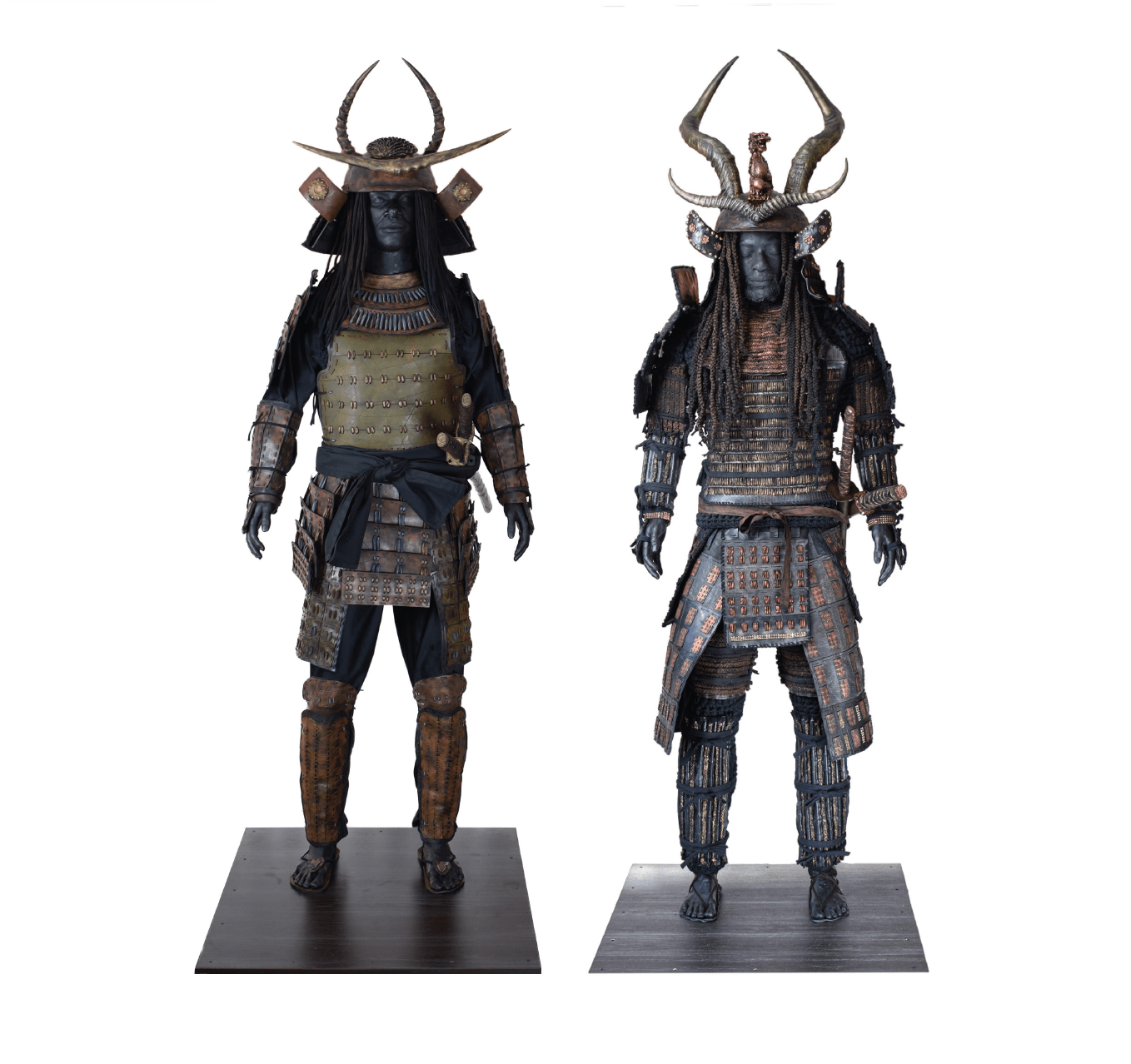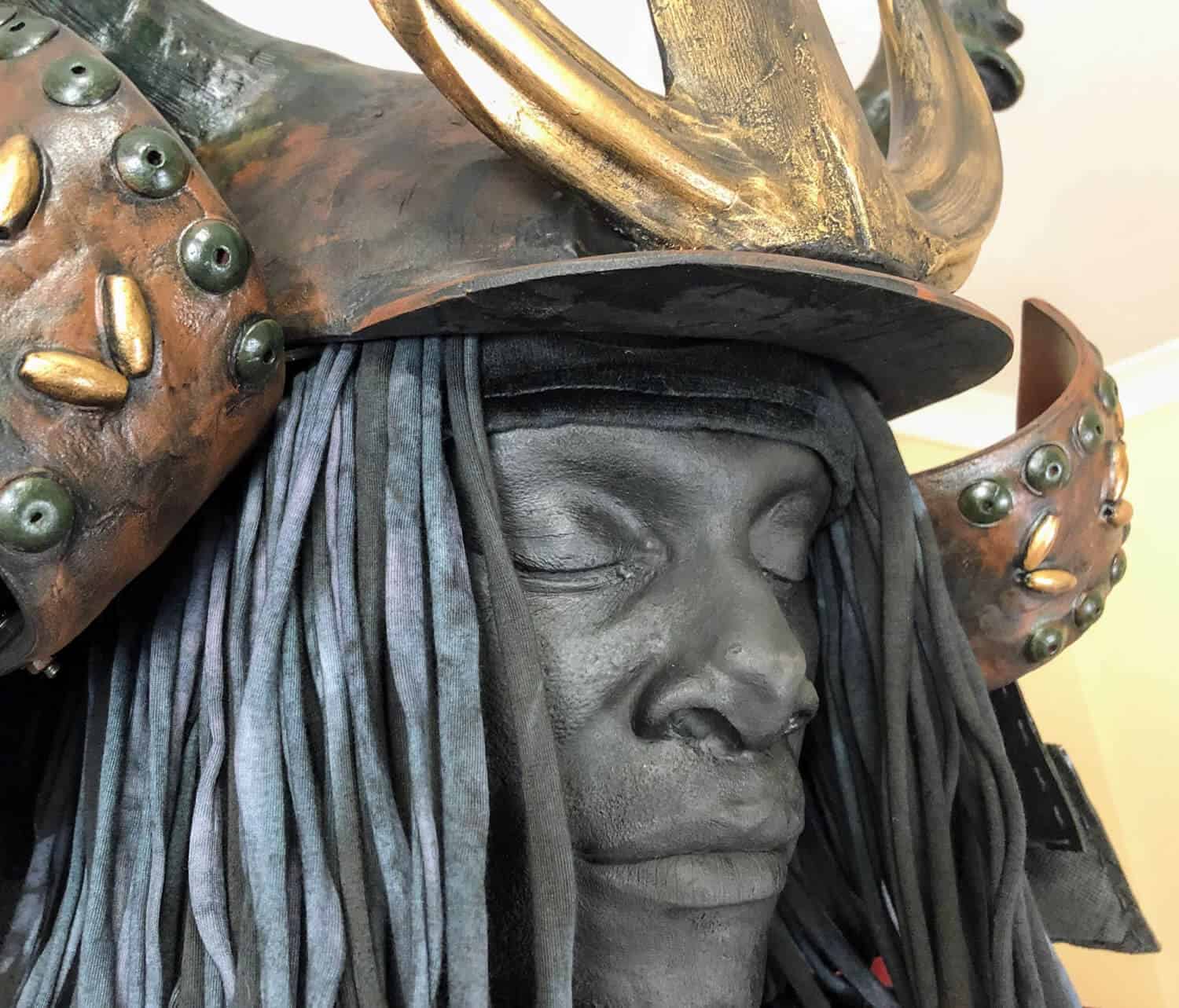Roos’ pieces reflect on Africa’s historical co-dependence on global superpowers and how histories are constructed and written in our emerging inter-connected world cultures.
‘The East is a career, Benjamin Disraeli declared. An imperialistic vision, it was as accurate in 1849 as it is now – even though the world has radically changed, the East no longer the West’s lackey. Today we recognise that the East is a potent economic and cultural force. As Edward Said noted in his great study, Orientalism, the East was never merely a static or exotic Western projection, despite the persistence of this prejudicial view. Andre Gunder Frank aptly summarises the about-turn in ReOrient, his book on the global economy in ‘the Asian Age’.
“THE EAST IS A CAREER” – Benjamin Disraeli
LEFT: Obsidian Samurai XXII, 2020. Polyurethane plastic, used inner tyre tubes, stainless steel, aluminium, wood, polyurethane foam, nails, glass, epoxy resin, cotton cloth, cotton cord, cotton rope, thermoplastic, wax pigment, faux suede, beads, replica katana. Dimensions: 820 x 810 x 2042mm. © Matthew Miller. RIGHT: Obsidian Samurai XVII, 2019. Polyurethane plastic, used inner tyre tubes, stainless steel, aluminium, wood, polyurethane foam, nails, glass, epoxy resin, cotton cloth, cotton cord, cotton rope, thermoplastic, wax pigment, faux suede, beads, replica katana. Dimensions: 820 x 810 x 2120mm. © Matthew Miller
There is much talk these days of Chinese dominance in Africa, of its broader imperial aspirations. We speak of an East-West geopolitical axis and ponder the fate of the South in this ongoing global struggle. But, in a more positive turn, we should, and do, also consider a productive co-dependence between Africa, the last frontier, and Asia, the new regional superpower. My point here is not to explain away what is doubtless a radically unsettled and unsettling contemporary moment. Rather, I want to celebrate the novelty of this shift in power – the waning Western world, the emergent East, and Africa’s place in this shifting set of economic and cultural relations.
The South African artist, Nicola Roos, positions her work precisely at this interface between Africa and Asia. Her ongoing sculptural series, No Man’s Land, begun in 2015, depicts a black African Samurai. The synthesis seems anomalous and strange, but its more significant impact is to remind us that the dialogue between Africa and the East long predates its relation with the West.
Why did Roos choose to focus on ‘the only dark-skinned Samurai ever written into recorded history… who was taken from his homeland and came to serve an influential feudal lord in late 16th century Japan’? Surely it is not the rarity of this occurrence that preoccupied her? Surely a more profound meditation on cultural difference and exchange is its greater fundament?
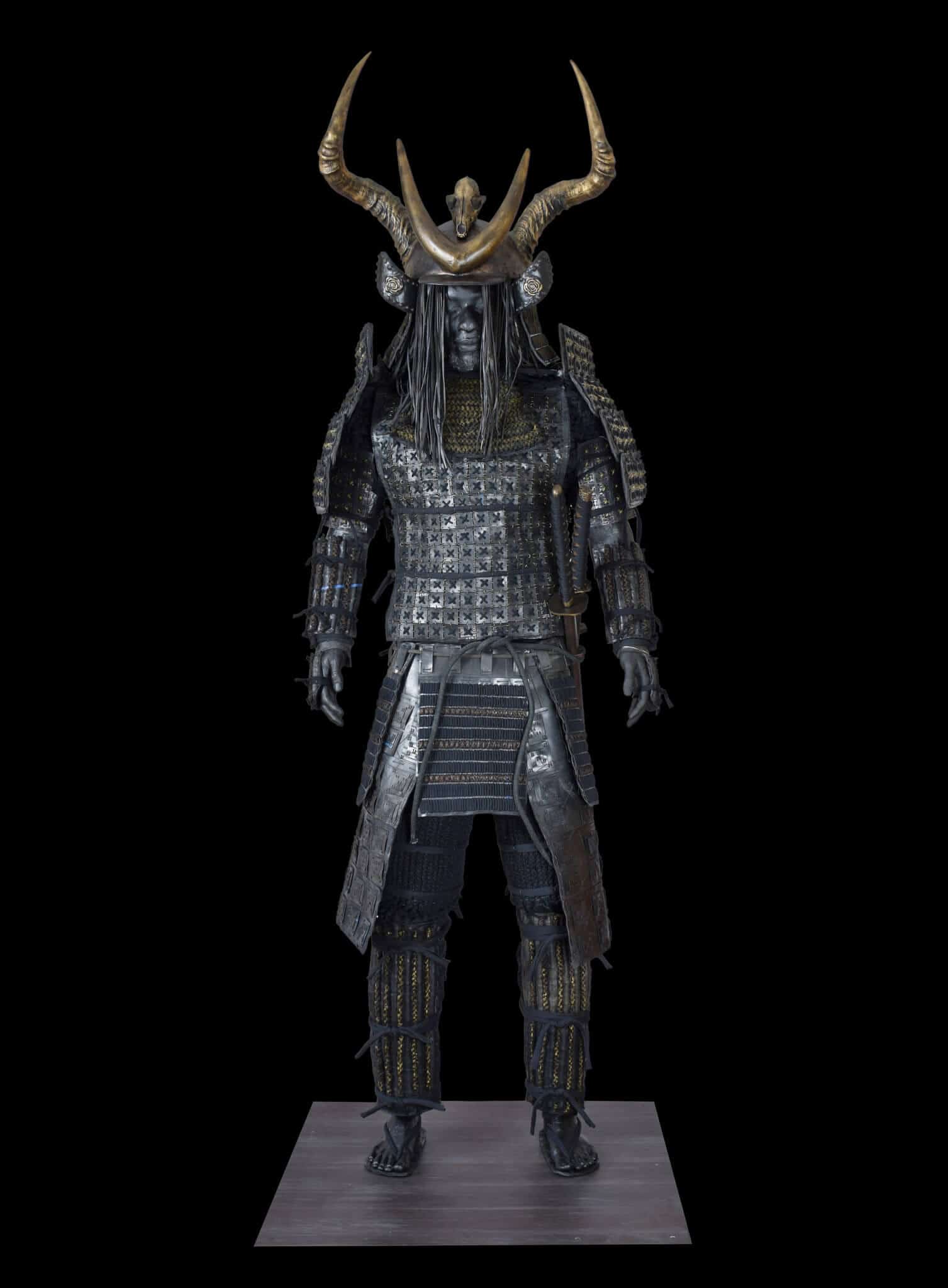
Obsidian Samurai XVI, 2019. Polyurethane plastic, used inner tyre tubes, stainless steel, aluminium, wood, polyurethane foam, nails, glass, epoxy resin, cotton cloth, cotton cord, cotton rope, thermoplastic, wax pigment, faux suede, beads, replica katana. Dimensions: 820 x 810 x 2120mm. © Matthew Miller
When Roos speaks of ‘Cultural change, in response to socio-economical, historical or political forces’, of the need for ‘better knowledge of alternative culture… cultural mergers… new syntheses in languages, religion, and other domains’, she is focussing on a more critical crux – that the world is what it is not because of exclusionary nationalistic differences, but because of the endlessly surprising and enterprising coexistences of peoples and cultures. Hers, in other words, is an inclusive and profoundly democratic vision. That she should celebrate the writings of the American ethnographer, James Clifford, is par for the course. As Clifford notes, ‘in an inter-connected world, culture is always to varying degrees, “inauthentic”’, by which Clifford means that it was never as purely singular as it imagined itself to be. There is, in fact, no mutually exclusive East and West, or South and North for that matter. If we persist in maintaining this divisive and opposed logic, it is because we wish to hold fast to imagined essences. And yet – and this is Roos’s and Clifford’s key point – we find ourselves today in a ‘possibly threatening, unstable no man’s land’ which thrives ‘beyond official history.
Her life-sized figures… are the embodiment of a local cultural breakdown and a communal future where beliefs, assumptions and knowledge about place and culture can be deconstructed and renegotiated’.
It is with this more turbulent and contesting view in mind that we now find ourselves compelled to rethink our place in the world, our so-called inherited culture and values, our taste. As Hans-Ulrich Obrist notes in ‘Manifestos for the Future’, we are dealing with ‘A plurality of temporalities across space, a plurality of experiences and pathways through modernity that continues to this day, and on a truly global scale… We are now living through a period in which the centre of gravity is transferring to new worlds’.
With this critical new understanding in mind, we must measure the value and impact of Roos’s creative vision. Her life-sized figures, or ‘characters’, are ‘no longer individuals’, she says, ‘but rather elements of an imagined realm… They are the embodiment of a local cultural breakdown and a communal future where beliefs, assumptions and knowledge about place and culture can be deconstructed and renegotiated’. As the world regresses, we witness deepening retrenchments – isolationism, populism, nativism, nationalism, fascism, and the dread and fear upon which it feeds. There is also the rise of counter-intuitive and counter-cultural ‘mergers’ which Nicola Roos, James Clifford, and Hans-Ulrich Obrist embrace and body forth.
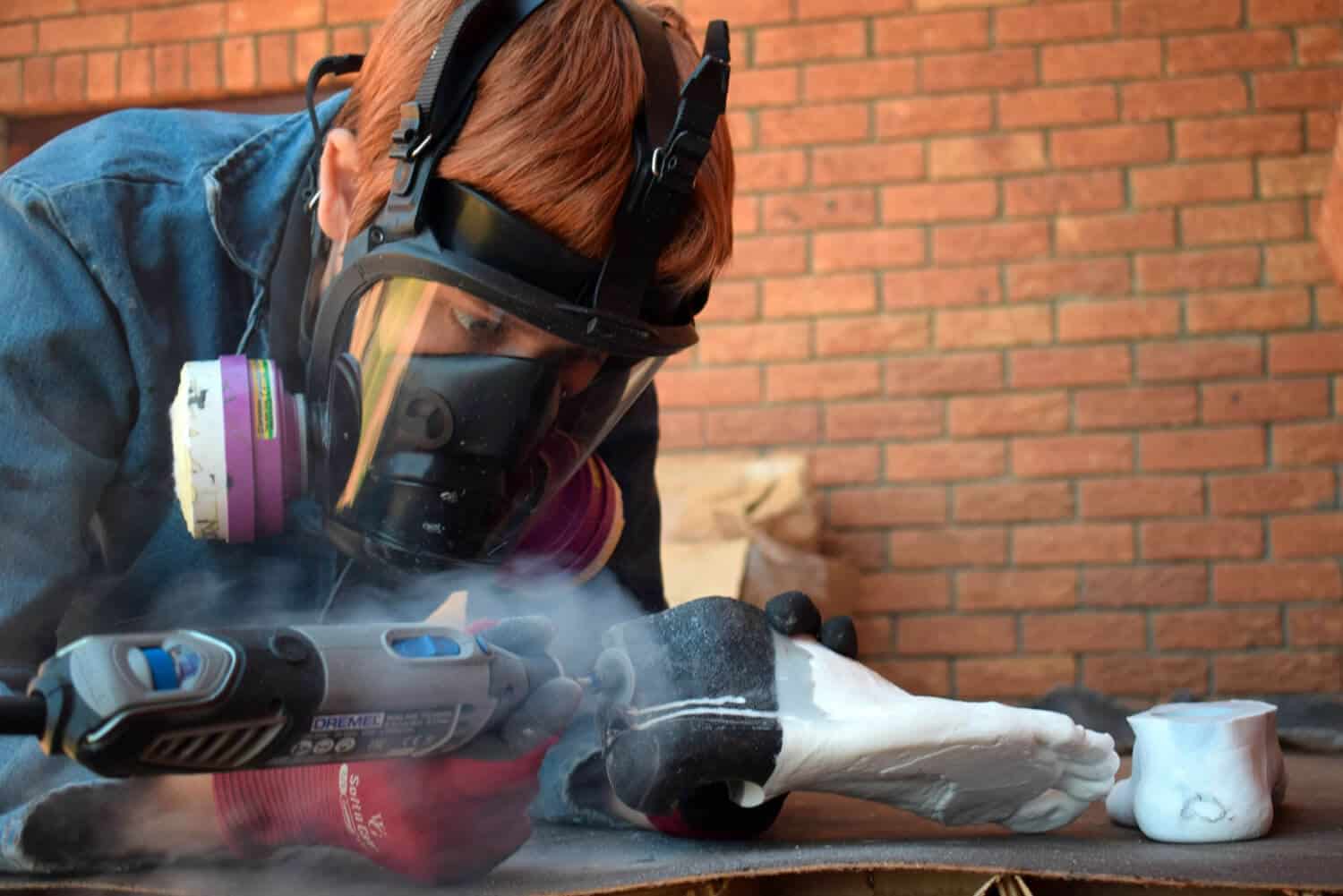
Nicola Roos at her studio in Cape Town, South Africa. © Matthew Miller
…[My work] speaks to the erasure of African narratives, traditions and histories in the colonial era and the loss of Yasuke’s individuality.
Detail of Obsidian Samurai XXIII, 2020. Polyurethane plastic, used inner tyre tubes, stainless steel, aluminium, wood, polyurethane foam, nails, glass, epoxy resin, cotton cloth, cotton cord, cotton rope, thermoplastic, wax pigment, faux suede, beads, replica katana. Dimensions: 820 x 810 x 2060mm. Courtesy of the artist.
Ashraf Jamal: The focus and theme of your No Man’s Land series – a black African Samurai – is intriguing, especially given that you are a white Afrikaans woman. Your work suggests that you have a more inclusive vision of yourself and the world you inhabit. Is this the case? How do you see your experiences and work in the context of the highly intriguing Afro-Asian story your sculptures convey?
Nicola Roos: As a person who grew up in democratic South Africa, I was also a part of the nationwide call for the decolonisation and Africanisation of knowledge bases that culminated in the Rhodes Must Fall movement in 2016. I have continuously inhabited a world on the cusp of continuous movements towards greater inclusivity and equality.
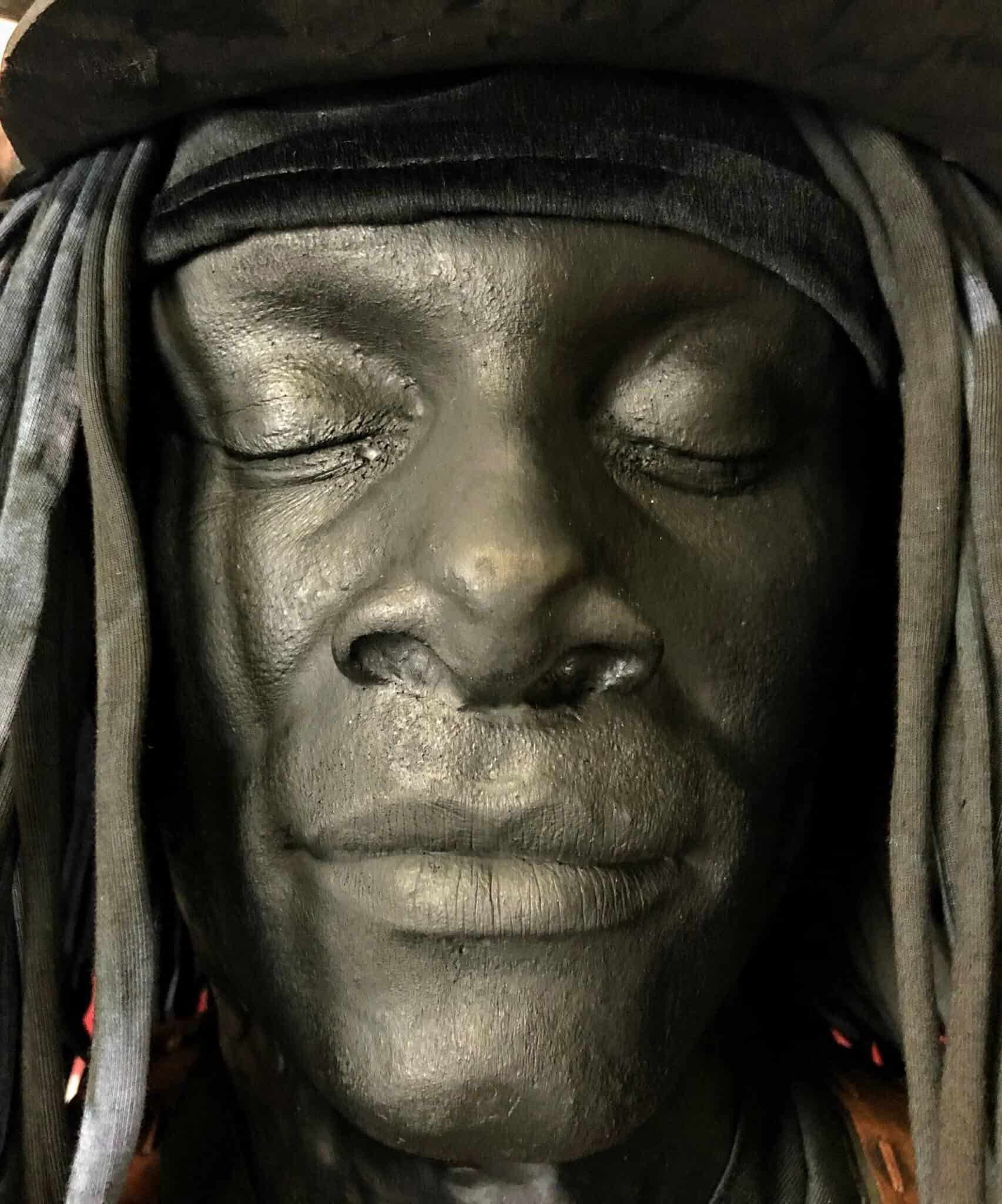
Detail of Obsidian Samurai XXIII, 2020. Polyurethane plastic, used inner tyre tubes, stainless steel, aluminium, wood, polyurethane foam, nails, glass, epoxy resin, cotton cloth, cotton cord, cotton rope, thermoplastic, wax pigment, faux suede, beads, replica katana. Dimensions: 820 x 810 x 2060mm. Courtesy of the artist.
Despite various re-tellings and re-imaginings of “the African Samurai” over the last 500 years, we have no records of Yasuke’s voice. He was never allowed to tell his own story.
Tell us about your choice of rubber as material (which has its loaded message). The pieces are very monotone, with faces seeming to merge with the armour. Despite their menacing and monumental presence, they are ghostlike. Is this because you are not making a statement but seeking to construct a sculpture as a vehicle for dreaming and mystery?
The closed eyes and serene faces do indeed turn the focus towards the inner world. It speaks to the erasure of African narratives, traditions and histories in the colonial era and the loss of Yasuke’s individuality. Despite various re-tellings and re-imaginings of “the African Samurai” over the last 500 years, we have no records of Yasuke’s voice. He was never allowed to tell his own story, which is alluded to through the sculptures’ non-confrontational body language and facial expressions.
Judging from the responses I’ve witnessed at the Cape Town art fair, your sculptures are immensely appealing. Can you tell us where we can find the works? Who owns them? And why? Are they bought by private collectors, or are they also in museums? Given that, for me at least, they feel like eternal and ancient figures, static and noble, I’d like to believe they are actively engaged with and not hidden in some dusty storeroom. Perhaps you think me silly, but I’m drawn to their compelling mystery and hope that others feel this too.
My works are in various private and institutional collections both locally and abroad. Privately, works have been acquired by individuals, including Stefan Simchowitz, Arnold Lehman and David Altman. One of my works is on display in the lobby of the ICM Partners in Los Angeles. Another work, housed in the institutional collection of the University of South Africa, can be engaged with by academics and the public alike. Two works from 2017 and 2021, respectively, are also a potential point of discussion in the Cape Town offices of The Sovereign Group. Lady Linda Wong Davies from the KT Wong Foundation, which places a strong focus on establishing cultural bridges between Africa and Asia, has also invested in a sculpture from my “No Man’s Land” series that contributes to building these intercontinental discourses.
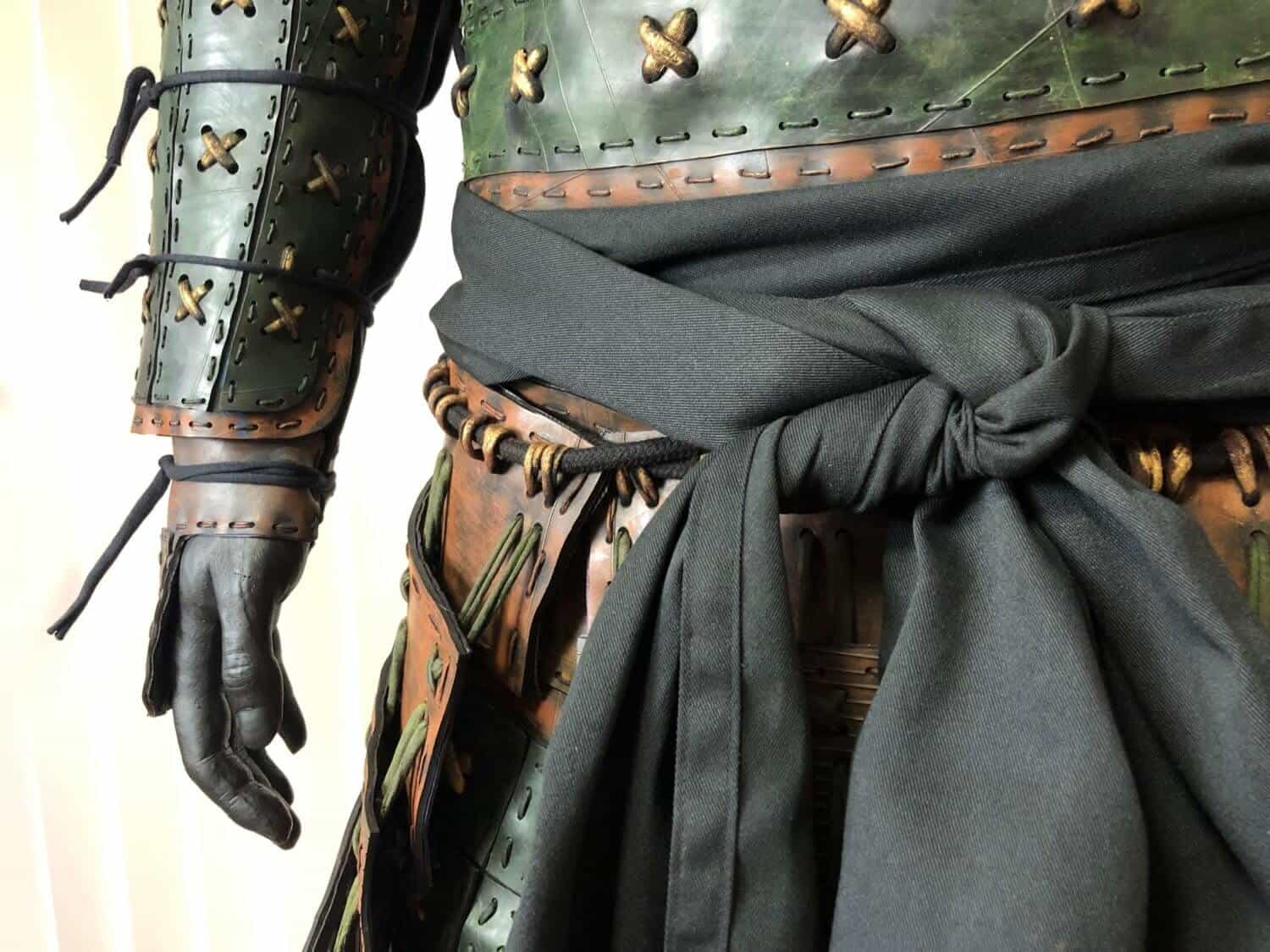
Detail of Obsidian Samurai XXIII, 2020. Polyurethane plastic, used inner tyre tubes, stainless steel, aluminium, wood, polyurethane foam, nails, glass, epoxy resin, cotton cloth, cotton cord, cotton rope, thermoplastic, wax pigment, faux suede, beads, replica katana. Dimensions: 820 x 810 x 2060mm. Courtesy of the artist.
It seems to me that your vision of the world is anything but static or binary. Given geopolitical shifts and the greater need for compassion and mutual understanding, the uniqueness of your focus is a great plus. You revere the ethnographer, James Clifford, who tells in his ‘In an inter-connected world’, that ‘culture is always to varying degrees “inauthentic”’. What does he mean by this? Is interconnectedness a good thing? If so, then why? I should add that I support this viewpoint. I’m intrigued by your take on it.
Clifford speaks to the certainty of the hybridisation of cultural values and traditions. This “inauthenticity” has become a celebrated trait of our globalised world today instead of a degrading mix of syncretic circumstances. Arguably Yasuke’s embracing of foreign culture could even be seen as his attempt to preserve and promote African indigeneity.
Ashraf Jamal is a Cape Town-based academic, writer and cultural theorist. He is a Research Associate in the Visual Identities in Art and Design Research Centre, University of Johannesburg, and teaches in the Media Studies Programme at the Cape Peninsula University of Technology in Cape Town. He is the co-author of Art in South Africa: The Future Present and co-editor of Indian Ocean Studies: Social, Cultural, and Political Perspectives. Ashraf Jamal is also the author of Predicaments of culture in South Africa, Love themes for the wilderness, and the award-winning short fiction, The Shades. Jamal’s latest book is In the World: Essays on Contemporary South African Art, published in 2017 by Skira.
